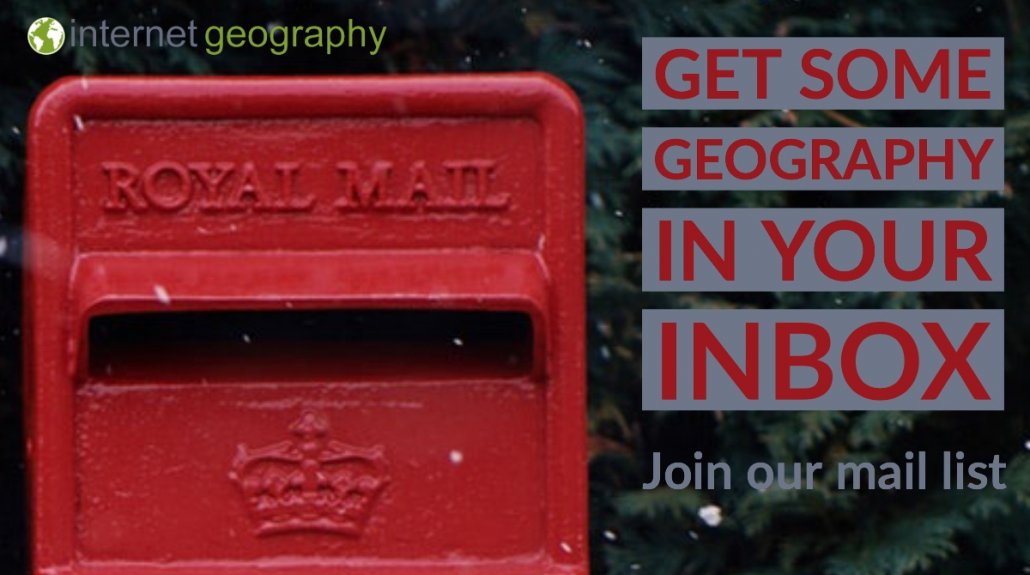The Opportunities Created by Urban Change in a Major UK City
Home > Manchester Case Study > How has urban change created opportunities in Manchester?
How has urban change created opportunities in Manchester?
Manchester has undergone significant urban transformation in recent years, revitalising its infrastructure, economy, and cultural scene.
- The Northern Quarter:
Once a neglected area, the Northern Quarter has become a hub for independent businesses, cafes, music venues, and street art. This regeneration has turned it into a vibrant cultural district, attracting locals and tourists alike. - Spinningfields:
This area has been redeveloped into Manchester’s financial district, home to global corporations, banks, and high-end restaurants. It now serves as a centre for business and luxury living. - Salford Quays and MediaCityUK:
Once derelict docks, Salford Quays has been transformed into a thriving area with modern housing, museums like The Lowry, and MediaCityUK, home to the BBC and ITV studios. - Mayfield Depot:
The former industrial site near Piccadilly Station has been redeveloped into Mayfield Park, the city centre’s first park in over 100 years, offering green space and recreational facilities. - Castlefield:
This historic part of Manchester has been revitalised, preserving its Roman heritage while introducing modern residential developments, canalside cafes, and green spaces. - The Etihad Campus Redevelopment:
Built for the 2002 Commonwealth Games, the Etihad Stadium and surrounding area have been further developed into a sports and entertainment complex. The campus includes facilities such as the Manchester Institute of Health and Performance (MIHP), a training ground for Manchester City FC, and the National Cycling Centre. This redevelopment has brought significant economic benefits and boosted tourism in the city. - Oxford Road Corridor:
Significant investment in education and healthcare institutions, such as The University of Manchester and Manchester Science Park, has transformed this area into a hub for innovation and research. - The Trafford Centre Area:
The shopping complex and its surrounding area have seen extensive development, including entertainment facilities, hotels, and improved transport links via the Metrolink.
Manchester’s urban change showcases its ability to balance economic growth, cultural development, and sustainability, cementing its status as a modern global city.
Social Opportunities in Manchester
What changes are affecting Manchester?
Manchester is probably most well known for Coronation Street, football and rain. However, a huge range of opportunities have occurred across the city in recent years. The 1994 IRA bomb led to a huge regeneration project across the city, mainly focusing on retail. Still, other events, such as the 2002 Commonwealth Games, have also encouraged massive changes across the city, and it is now home to a range of different facilities for the people who live here to use. There is a considerable increase in gentrification and regeneration across the city, with vast numbers of old buildings being converted into housing yearly.
Manchester’s Cultural Mix
Manchester is said to be one of the most multicultural cities in the UK, with nearly 200 languages spoken there. It is constantly changing and evolving due to the diverse mix of people who live there. Manchester is home to the largest Jewish community outside of London, and Chinatown is the second largest in the UK. Not only is Chinatown home to many restaurants and Asian supermarkets, but year-round events attract thousands of people. The Chinese New Year Parade is one of the most anticipated events on the calendar. Rusholme is home to the famous ‘curry mile’, with countless restaurants and shops catering to the local South Asian and Middle Eastern communities.
Due to the city’s wide range of diversity, Manchester is home to countless festivals and events, such as the Manchester International Festival, a Caribbean Carnival, the Manchester Irish Festival, and a wide variety of film festivals, including the UK Jewish Film Festival and Viva! – Spanish and Latin America Film Festival.
Recreation and Entertainment
Manchester has a huge range of opportunities for live entertainment, with a huge range of nightclubs – such as the world-famous Hacienda and the Ritz, comedy clubs such as Frog and Bucket and The Comedy Store, as well as other music and performing arts venues such as the Bridgewater Hall, the O2 Apollo, and the AO Arena. Manchester is well known for its wide range of live music and has live music events across the city every week. Across the river into Salford, there is also The Lowry Theatre, which has a wide range of events across the year.
Manchester is probably most known for its world-famous football teams – Manchester United and Manchester City. Both stadiums attract almost one million visitors annually, bringing in huge amounts of money. Old Trafford is (and has been for the last 40 years) the most popular tourist destination. The Etihad was built for the 2002 Commonwealth Games, which also brought about huge amounts of investment across the city, including the Aquatics Centre, Manchester Squash Centre, Manchester Velodrome – where the UK Cycling and BMX teams train and the Powerleague Sportsdome home to the Manchester Giants Basketball team.
Manchester is also home to a huge variety of different museums and galleries, such as the newly refurbished Manchester Museum, MOSI—Museum of Science and Industry, The National Football Museum, and the People’s History Museum. Popular art galleries include the Whitworth, Manchester Art Gallery, and Castlefield Gallery. The John Rylands Library is also very popular with students, locals, and tourists alike.
Shopping
Visitors from all over the UK travel to Manchester to shop. The city has various shopping centres, such as the Arndale, Exchange Square, Market Street, and the boutiques around King Street. Manchester is also home to The Trafford Centre, which has over 150 shops, over 50 restaurants, and over 50 cafes. There is also a cinema, crazy golf, indoor amusement centre, and bowling.
Economic Opportunities in Manchester
How has urban change created employment opportunities in Manchester?
Manchester is a leading European Business destination and the most successful city outside of London for attracting foreign direct investment. Within the city centre region, 54.3% of the population are ‘economically active’. Within the other 36.7%, students make up 13%, retired people make up 10%, and unemployed people, including those looking after family/long-term sick, make up the other 13.7%. The 2021 Census showed the main industries include people employed in the wholesale and retail trade linked to motor vehicles and motorcycles (15%), human health and social work (17.4%) and education (10%).
Environmental Opportunities in Manchester
How are changes affecting Manchester’s environment?
Urban Greening
The development of the city centre has led to the creation of the city centre’s first new park in over 100 years. Mayfield Depot is a 6.5-acre park alongside the River Medlock. It has been built on former industrial land next to Piccadilly station and is now an accessible green space for everyone to use. The park has security measures to ensure safety, such as cameras and gates once dark, a play area for children to use, multi-surface paths suitable for running, biking and walking and floodable meadows to increase sustainability.
The city is also home to the newly opened Castlefield Viaduct, owned by the National Trust and opened in July 2022. The temporary urban park includes information about the viaduct’s heritage while providing an elevated park with trees, plants and flowers.
Manchester has recently developed a ‘green strategy’ to ensure the city has a ‘green and blue spaces’ network, creating multi-functional benefits for everyone. The idea behind this is to enhance wellbeing, promote biodiversity and address climate change and flooding – while ensuring economic development can continue. This huge focus on creating a liveable city which can continue to provide new homes and transport infrastructure while also ensuring a focus on creating green spaces.
Integrated Transport
Transport for Greater Manchester is the city’s public body. The website provides a range of journey-planning tools to ensure people can easily use the integrated transport system. Within the city centre, there is also a free bus scheme. Two circular bus routes provide a ‘hop on, hop off’ service, linking all of the main railway stations, shopping districts, and business areas.
The Manchester Metrolink is one of the most successful tram networks in the UK. Trams are usually every 6-12 minutes and spread across the city and beyond. There are 99 stops along a 64-mile route, and over 36 million passengers use the system yearly. There are now eight different lines across the city, visiting each major railway station, Manchester Airport and the Trafford Centre.
Bus services across the city are now mainly run through the ‘Bee Network’, which began operation in 2023. For the first time in 40 years, bus services are under local control. By March 2024, the Bee Network will expand to include services in Oldham, Rochdale, and parts of Bury, Salford, and North Manchester. The Bee Network will replace TfGM, meaning passengers can buy one ticket for use across the system.
In addition to the local tram and bus services, Manchester is home to three major railway stations – Piccadilly, Oxford Road and Victoria. The railway line can also connect you to the Airport and all other major cities. The HS2 line, recently scrapped (October 2023), was initially planned to reduce travel time between Manchester and London. The current journey time to London is 2h4m.
Quiz
Related Topics
Use the images below to explore related GeoTopics.



